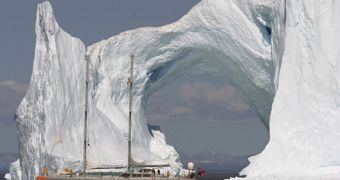A new international report details the Arctic situation more thoroughly, pointing out the changes that the North Pole region has undergone since 2007, in terms of ice movement and marine/wildlife developmental trends. According to the new study, this year's amounts of molten ice in the area are second only to those of 2007. Animals suffer various effects of the process – while some are expanding their habitats, others are in danger of going extinct.
The Arctic region, along with the Antarctic, accounts for the majority of glaciers and ice sheets in the world. Greenland also possesses significant quantities of ice, which help sustain a diverse ecosystem on and around them. But the recent report pointed out the fact that the temperature in the area has increased by a whooping 5 degrees Celsius (7 degrees Fahrenheit), which would account for the large rise in sea levels that is currently occurring worldwide.
With more ice melting, the ocean waters become less salty and darker in the region, which means that more sunlight is drawn in, heating the water even more. This is a vicious circle of sorts, as the only thing that can stop it is a drastic cooling in the overall climate of the planet. With global warming raising temperatures through the roof, it's very likely that the melting of the ice caps and glaciers will continue over the next years.
The wildlife suffers different consequences from the heating. Species like the polar bear and the walruses are being threatened by the reduction of the ice sheets, as their hunting grounds shrink and the animals sometimes drown before they can reach firm ice. Both species are highly dependent on ice for their natural life cycles, including the mating period. On the other hand, goose and shrubs expand their habitats considerably, occupying regions that were previously covered in permafrost.
More than 45 scientists from 10 countries worked on this report, which compiles a list of various factors that affect or could potentially affect Greenland and the Arctic in the future. The largest single threat remains global warming, which can lead to a decrease in the total amount of ice that remains frozen even through the summer. More molten ice means higher sea levels, which can lead to catastrophic floods, with unimaginable consequences.

 14 DAY TRIAL //
14 DAY TRIAL //